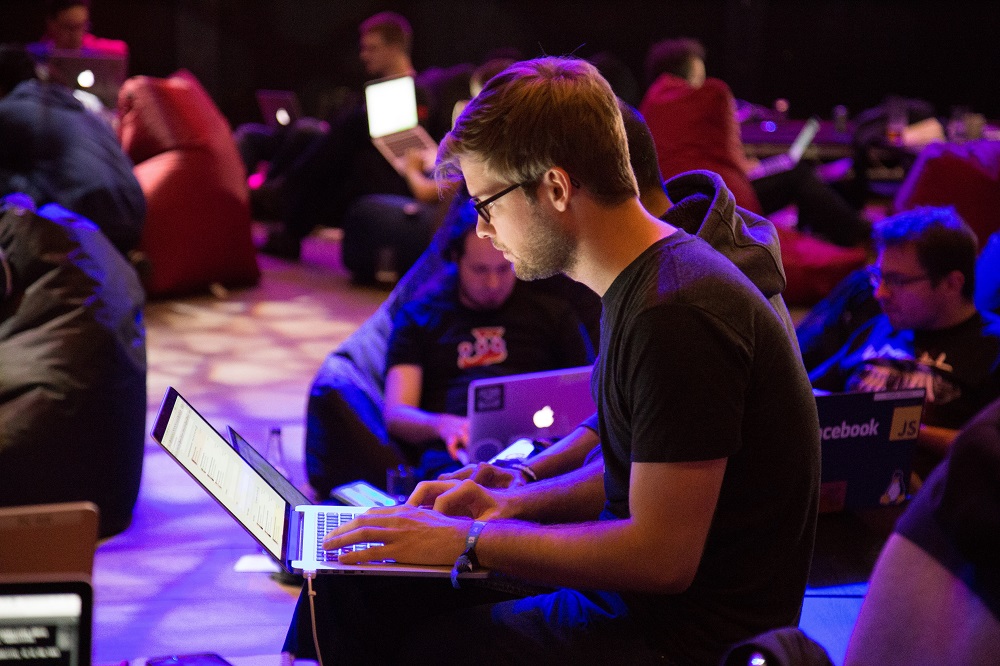Silicon Valley, today, remains the world's leading technology and innovation hub.
For many years, Silicon Valley has been the birthplace of high-growth expertise corporations. This small patch of land has given the tech world some top corporations like Hewlett-Packard (based in Palo Alto in 1939), Apple (Los Altos, 1976), Google (Menlo Park, 1998), and Uber (San Francisco, 2009). The valley in 1999 started attracting a 3rd of worldwide VC funding. By 2011, 20 of the world’s 27 unicorns were headquarters in America.
The diffusion of capital in Silicon Valley displays the big progress in tech in recent times that lifted many boats. However, it has endured all the past ups and downs of the funding cycle. When the tech valuations slid during the fourth quarter of 2021 and the first quarter of the year 2022, the share of funds flowing to companies exterior America remained excessive at 51 percent.
Hyper-localization indicates that every hub is distinct. Today 70 percent of South-East Asian unicorns and 80 percent of Latin American ones are in fintech or client web. This increase in tech clusters globally has been fueled by several structural developments. With the worldwide unfolding of high-speed web and smartphones, startups can serve their clients all over the place from wherever. This fast expertise adoption has made the market a lot deeper.
At the same time, progress charges in mature markets have slowed, and competitors for investments have risen. Enterprise capitalists have begun wanting elsewhere for their subsequent massive wager. The pandemic urge of all digital issues has fueled these tendencies.
Read more: Bias in Artificial Intelligence: Is Diversity the Key to the Future Of AI?

The Rise of Silicon Valley
Even after decades of bafflement, the world is still struggling and working towards guessing the secret of Silicon Valley’s success. It is true that the towns and cities at the San Francisco Bay’s southern end have plenty of tech talent, but that is scarcely an explanation. These ambitious young engineers and innovators are working toward innovating the world when they can just work about anywhere they choose.
But the riddle remains unanswered.
The surrounding area of Silicon Valley has its share of universities, government research centers, and commercial labs. And a start-up could hardly ask for any more encouraging circumstances. This large pool of highly educated workers, access to plentiful venture capital, and a highly risk-taking culture it has all that a startup truly requires.
But Silicon Valley enjoys zero monopolies on any of those features. The capitalism practiced previously in Silicon Valley was much more strategic than was known publicly. Capital did not chase opportunity as most of the startups believed but forced those seeking capital to migrate to SV. As the tech economy became more important, the supercluster in SV had a hollowing-out effect on the rest of the world. Major firms started raising massive funds and going global, while governments began working strategically with local funds. Though small clusters were formed in Boston, San Diego, and Seattle, the states are lagging way behind purely due to private efforts or state-led efforts.
Silicon Valley is home to 136 unicorns, still more than any other place in the world. Unicorns can be located in 45 countries; of those, more than 1,000 trot the globe. Nearly half of the unicorns reside outside America. The percentage of venture capital flowing into the startups in America has fallen from 84% two decades ago to less than half.
But why does America have a larger share of unicorns?
Many factors affect a city’s perception as an innovation hub. The factors include accelerators, tech parks, corporate investment, state-of-the-art infrastructure, and a few wildly popular success stories.
Read more: Thinking of Crypto Investments? Watch out for the Ten Common Mistakes
Three Critical Ingredients for Startup Success
-
A deep pool of talent
A deep talent pool is the most prominent ingredient of a successful cluster. Silicon Valley benefits from proximity to innovative brains such as the University of California, Stanford, and Berkeley, which enlists the best and brightest like elite minds. Such elite units are an immediate signal for a venture capitalist flow. Investors back startups that seek or hire young technologists.
-
Openness to people and ideas
Migrants are a disproportionately ambitious bunch. Around 60% of America’s most valuable tech organizations were formed by immigrants or their children. European hubs, including Berlin, London, and Paris, are home to ten or more unicorns and have large immigrant populations. China lacks the foreign founders' space, but its startup hubs like Shanghai and Shenzhen draw a plethora of returnees who studied or worked abroad.
-
The presence of local risk capital
For a startup to thrive, it needs support from those who understand the ecosystem and are willing to feed it. These supports can be founders and employees of previous startups who go on to become angel investors for the next generation. A local capital base also stimulates important types of risk-taking. It empowers employees to leave existing firms and join or even start competing startups.
While the significance of expertise, openness, and dangerous capital will persist, the startup clusters are thriving due to a mixture of the three. The globalization of venture capital is gaining momentum with the asset bubble expansion and diversification of VC.

Redrawing the Map of Startups
Innovation has become decentralized globally, and some cities are now making great progress while others are still tackling the macroeconomic and infrastructure challenges.
Today younger companies are starting to eye a wider area to arrange and mature as a venue for bold technologies. Different from Silicon Valley, the new bursting startup in Beijing, London, Bengaluru, and Singapore are in their earlier stages of hub-dom. All startups enjoy a huge pool of technical talent, deeper network links to other parts of the world, and local risk capital. Together, these upcoming startups are redrawing the map of global innovation and creating one that is more diverse and competitive.
Younger innovation hubs like Bengaluru, São Paulo, and Singapore are coming up more alike in their focus which is regional rather than global. Instead of breaking new ground, they are adapting to existing business models to cater to their local market conditions.
But many of these new clusters look different from the original ones in Silicon Valley. They differ from each other in many aspects. Like Silicon Valley, the more mature hubs tend to spawn more deep tech firms working in intricate areas like artificial intelligence (AI) and other sophisticated software aimed at corporate customers.
Read more: ESG & Sustainability: Shaping the Future of Digitized Procurement Value Chain
![]()
To Sum Up:
Even today, Silicon Valley is one of the distinguished sources of innovation that dominates the tech world around the globe. A special trait that distinguishes Silicon Valley’s firms from other companies is the ability to integrate innovative strategies with their business strategies. That one trait makes the difference between success and mediocrity.
The corporate culture of a Silicon Valley firm is two and a half times more likely to be adjusted to the company’s innovation strategy. Coordination like that plays big dividends.
While corporates globally aim to grow far more vigorously when compared with Silicon Valley, they lack specific factors.
The pandemic showed that the clustering of talent across the globe, while still important, is not driving innovation anymore. About 30 percent of India’s present herd of 60-odd unicorns' primary goal is to capture the worldwide market. And new cities across the globe are joining the club and becoming a part of the ranks of tech hubs. Nigeria’s business capital, Lagos, is becoming a poised nation to develop into the dominant participant.
With the youthful clusters maturing, Silicon Valley is steadily offering more options to innovate extra superior tech. They are now developing a deeper sense of global mindedness . The credit for the success of Silicon Valley has more to it than geography and corporate culture.
What does the future of Silicon Valley hold?
With presence in New York, San Francisco, Austin, Seattle, Toronto, London, Zurich, Pune, and Hyderabad, SG Analytics, a pioneer in Research and Analytics, offers tailor-made services to enterprises worldwide.
A leader in the Technology domain, SG Analytics partners with global technology companies across market research and scalable analytics. Contact us today if you are in search of combining market research, analytics, and technology capabilities to create compelling business outcomes driven by technology.








